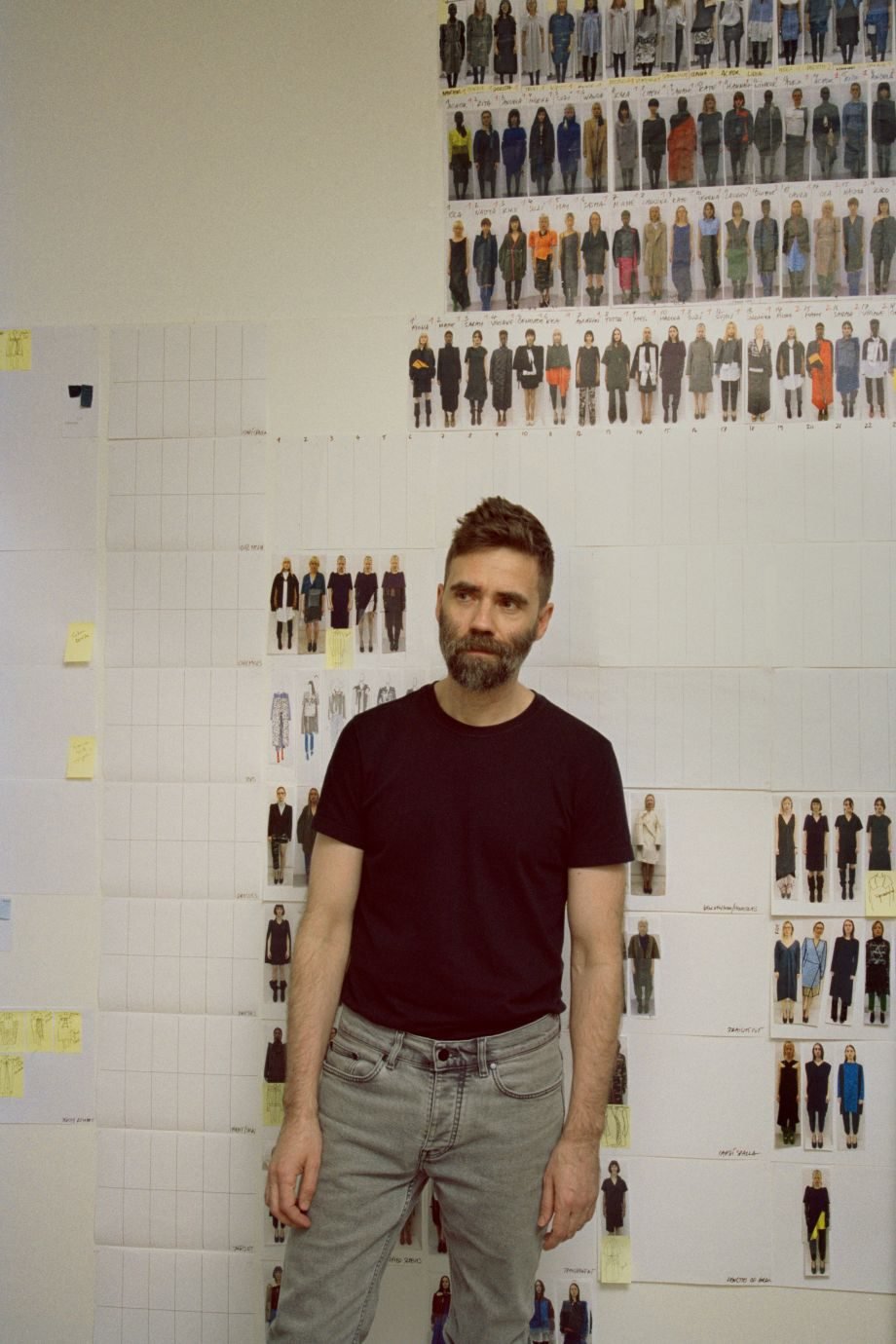Since the start of his career at Dutch magazine, he has experienced the industry changing drastically through the digital age and the rise of the influencer. Though today’s industry might appear borderless, Angelo paradoxically observes an eradication of the unexpected. As the fashion industry turns into a globalised system of spectacle, there is less space for the misunderstood, the subversive, the counter-cultural-in short, all the things that make fashion so exciting.
The ever-increasing speed of our profit-driven industry has often been lamented, but Angelo has observed first-hand how it impacts the creative process of design studios. There simply isn’t the time for in-depth research and inspirational journeys abroad, and so our catwalks are filled with watered-down versions of copies of duplicates of echoes we’ve heard a thousand times before. Simply calling out the copies, however, is a catty response to the problem, not the solution. The Italian writer hopes an alternative fashion system might rise, and that open-minded, honest criticism will save us all.
“If I can spot a reference, it’s a problem. It means that the process has not been digestive enough in order to create something new.”
How important is a designer’s process to you as a journalist?
I completely adhere to the Marshall McLuhan school of thinking. To me, the process is the product. The process is vital. Of course, as a critic, I mostly judge things at fashion shows, so I see the final result. But, if the process is long, creative, and explorative enough, that will be visible in the product at the end. The creative process is one that takes time. If I can spot a reference, it’s a problem. It means that the process has not been digestive enough in order to create something new.
Fashion is an industry with very strict deadlines, which force the creative to deliver the idea they have in mind. Deadlines are vital to the process. One of the problems with the system of today is that these deadlines are getting shorter and shorter, so the creative process gets shorter. It’s not the case anymore that designers design two collections per year, taking research trips abroad. I think that now, the creative process has been flattened to a visit to the vintage store and a bit of research online – but seeing things on the web and seeing them in real life is very different.
The increasing speed of the industry must impact your job as well. Have you found that over the course of your career, there is less time to appreciate a collection, or analyse it properly?
Absolutely! I’m exposed to more and more collections every year. Each collection is created faster. I don’t have the time to appreciate something. Many things just pass before my eyes without me being able to take them in fully. I live between Milan and Sicily, and when I come back to Sicily, I speak to my friends who are involved in other jobs, who ask me: “What did you see?” And I notice– because I try to see as much as possible–that I have a hard time explaining what I’ve seen, because it’s a blur. I just remember a few things, a few designers I really like: Rick Owens, Rei Kawakubo, Yohji Yamamoto, maybe some new designers. Some shows are just half an hour of sitting and waiting, and the next day it’s as if nothing happened. This is very hard for me to admit, but it’s also the way the system works today. There is too much going on, and what really matters is often put in second place. From all the shows I’ve seen during the month of May, it’s more likely that I’ll remember the far-flung destination or the setting, rather than the clothing. Which is not good, because everything should revolve around the clothing. Our time requires something highly visible, because the goal is for it to be shared on social media, but I would like the spectacle to be something that highlights the clothes, rather than making you forget about them.
“There is too much going on, and what really matters is often put in second place.”
You’re saying the creative process is becoming secondary to the spectacle?
Yes. I recently went to the exhibition Backside, in the Musée Bourdelle in Paris, which I highly recommend. It is an exhibition created by Alexandre Samson on the backside of clothing: trains, bows, plunging necklines, etc. It made me think about the way fashion is broadcasted nowadays, and the constraints that this type of broadcasting imposes on designers. We only see pictures from the front of garments, so designers don’t pay any attention to the back. We forget that garments are three-dimensional, because we only consume images that are two-dimensional, so everything is flat and everything is made to be instantly recognisable. Clothing involves another dimension, which is movement.
I’m old enough to have seen a different type of catwalk show. Models used to take off pieces of clothing, like jackets or coats, on the catwalk to reveal what was underneath. Now, stylists will stitch the closure of a coat, because the silhouette should look exactly as it was photographed during the fittings. One designer told me a stylist added stitches to the back of a shirt because he wanted the collar to stay still the entire time. To me, that is not a good thing. Movement can make things even more exciting. Everything today is very static and one-dimensional, both literally and metaphorically. Have a look at the Instagram account @unforgettable_runway. Nowadays, models are rushing from one place to the next–there is no connection to the audience. Back then, models made eye contact with the public. Sometimes, models would take off their jacket, just to show that the designer put a very dark lining inside a light jacket. But we would never see that today. Everything is so controlled–too controlled.












